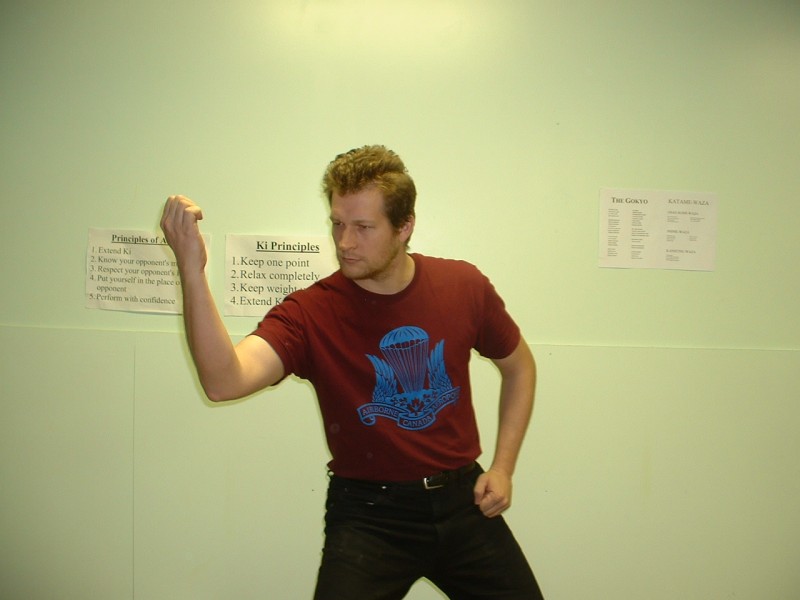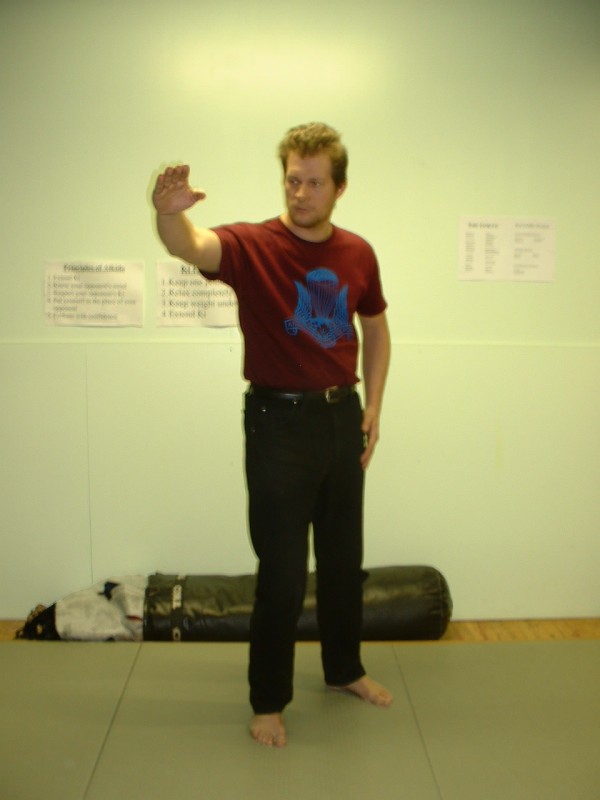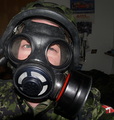Woosh - been busy recently. I've been doing more work on my book; this time working on a section covering effective arrest and defense tactics for LEO's.
In addition; while doing research one of the police reps have asked me to prepare a training guide (and provide a class) on this topic to be presented at this year's BBQ (which I mention in the 'upcoming seminar' thread).
So anyway I've been doing a lot of study and practice on the subject recently. I've been teaching cops for about 10 years now (off and on); and have learned a great deal about what they have to deal with - this section deals strictly with their issues; so it is considerably different than the rest of the text to this point (which deals mainly with avoidance and escape - two things not available to cops.)
Last night I spent some time with my students preparing a rough draft. One had her little digital camera there and took a few photos as a rough draft of the final guide; so I thought you guys might be interested in taking a look at what I've been doing.
I apologize in advance for the quality of the pictures - lighting conditions at the school are horrible and her camera was a cheap one; so they didn't turn out too well. Still; I hope you find the pics interesting.

Background
One of the most difficult aspects of a policeman's job is that they have a very strict set of guidelines under which they can employ physical force in the performance of their duty. While I am all for strict guidelines - the stricter the better, IMO - the problem is that the majority of these guidelines serve as cover-ass procedures for the police staff and city government. In other words; while it is often a very thin line between an effective takedown and police brutality; the procedures are designed with a great deal of overlap; so that an LEO taking down a perpetrator may well find himself the target of an excessive use of force charge; or failing that a civil suit by the criminal's lawyer.
An added problem is that physical force training for police is in gerneral horribly substandard.
Why is this such a problem? Aside from the obvious answer; it means very simply that without adequate training; an LEO must resort to harsher, strength-based means to effect an arrest of a resisting perp. This is why you generally see the 'dogpile' of cops on a violent criminal. Using harsh measures is ugly, gritty, painful and emotional - in a situation like this it is very easy to cross the line between safe takedown and excessive use of force. If emotion runds rampant - remember; cops are people too - that could easily pass into the 'police brutality' range as well.
LEOs are generally dissuaded against using Martial Arts in their job and for good reason: the vast majority of MA training doesn't fit the very specific needs of cops in the field (although it has brilliant application in other aspects of their lives).
Ideally you want a series of effective tactics that allow a smooth, safe takedown of a suspect that also satisfies both legal and procedural requirements; as well as another very important consideration: gun retention.
People tend to forget this; but it's critical: cops are armed. A gun however is a tool of last resort; and can easily become a deadly complication if the suspect manages (and its easier than you think) to get it out of the LEO's hand or holster- cops do get shot with their own guns; and not infrequently either.
So any tactics must, in order, satisfy these four requirements (in order of importance):
1) Gun retention
2) Officer safety
3) Acceptable use of force
4) Safe takedown and arrest of suspect.
Great Wave
The Great Wave Self Defense training system was designed for real-world application by a wide demographic - in other words; virtually anyone can use it, it is effective, and is easy to learn. This is because I designed it around a kinesiological approach rather than a traditional one - rather than doing things 'because that's how you're supposed to do them'; Great Wave students learn to work in ways that directly manipulate the attacker in the most effective means possible.
I call Great Wave 'Applied Kinesiology'. Kinesiology is the science of Human movement - 'Applied kinesiology' is the science of moving Humans.

Anyway; on to the pics: one example of how Great Wave can help LEO's in their job.



 Here's a fairly standard sport-MA front block. For what it's designed for it's excellent - but it is
Here's a fairly standard sport-MA front block. For what it's designed for it's excellent - but it is 

 Bar by Mees
Bar by Mees





